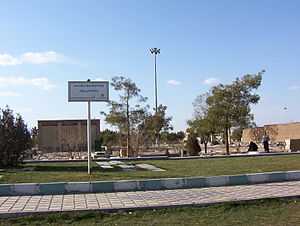Takht-e Foulad
 | |
| Details | |
|---|---|
| Location | Isfahan |
| Country | Iran |
| Type | historical cemetery |
| Website | Official Website |

Takht-e Foulad(Persian: تخته فولاد) is a historical cemetery in Isfahan, Iran. The cemetery is at least 800 years old. In the 13th century in the Ilkhanid era Takht-e Foulad was the most important cemetery in Isfahan and all of the famous personalities have a mausoleum in this cemetery. Unfortunately all of the mausoleums from the Ilkhanid era, except Baba Rokn ed-Din mausoleum, which is the oldest structure in Takht-e Foulad, have been destroyed. In the Safavid era there were 400 mausoleums in Takht-e Foulad, but there are now only 8 mausoleums from the Safavid era. In the Qajar era a large part of the cemetery was destroyed, but the cemetery hasn't lost its importance and by the end of Pahlavi era it was the most important cemetery in Isfahan. There are 20 structures from the Qajar era and 17 structures from the Pahlavi era in the cemetery. Before the Safavid age the cemetery had been known as Lessan ol-Arz and Baba Rokn ed-Din, but from the Safavid age until now its name is Takht-e Foulad.[1]
By the demand of people authorities have established Takht-e Foulad Cultural and Religious Complex in 1994 for rebuilding, organizing, and repairing this valuable cemetery. Since 1994, many gravestones have been repaired and rebuilt by this institution.[1]
The best days for visiting the cemetery are Thursdays and Fridays, because the most of mausoleums are open for visitors.[1]
The most important places in Takht-e Foulad are the followings:
- Malek section
- Haj Mohammad Jafar Abadei section
- Roknolmolk mosque
- Vale mausoleum
- Mir section
- Baba Rokn ed-Din mausoleum
- Agha Hosseyn Khansari mausoleum[1]
References
32°37′39″N 51°40′59″E / 32.62750°N 51.68306°ECoordinates: 32°37′39″N 51°40′59″E / 32.62750°N 51.68306°E